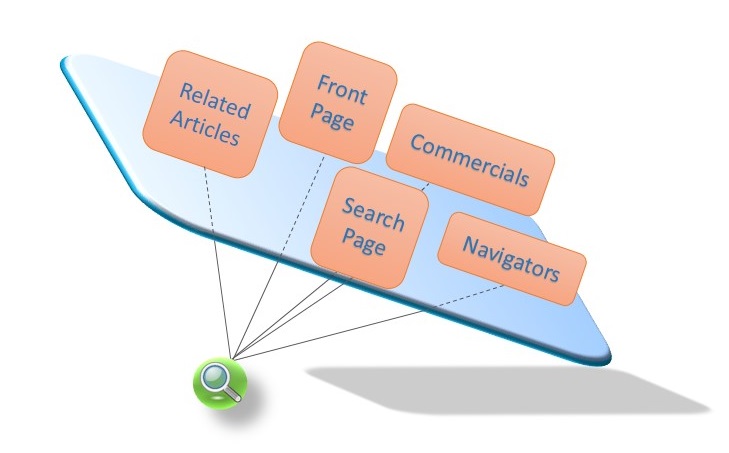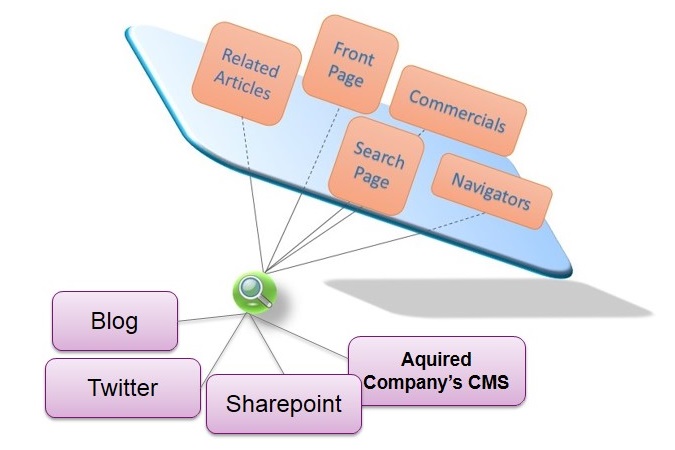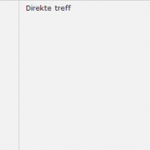Search driven websites
Search driven sites lets the reader find what they need on their own premises, not the architect’s!
This year’s summer internship program has been centered around the concept “Search driven websites”. Over the course of the summer we’ve gone from a concept and a vision to a prototype website, and we’d like to share the potential we’ve uncovered along the way with you.
What is a search driven website?
On a search driven website, everything is driven by search. More useful and less painfully obvious, a search driven website will get all its content, all its navigation and menus as a result of a search query. This allows a different and more dynamic approach to the structuring and placement of content, in contrast to a typical folder based, editor dependent website where someone has to decide exactly which articles and images will reside on the front page, or any page, at any one time.
A traditional site requires the user to spend time learning and navigating a cramped and complex menu structure to find the content desired. We believe that navigation can and should be done in a better way, through the use of an ever-ready search bar, dynamic navigators and relevant links. Even when displaying a single page, a search is performed to retrieve that article along with related results.
There are immediate advantages to using search as the main logic module of a website. Take the front page: Set the site’s opening search to “*” – search everything – and make the search engine order the results by relevance, popularity and date. Display the results as proper, readable articles, and you get a site containing the content you want to display without having to manually specify what goes where. A clear advantage here is that popular results will be displayed automatically on the front page, letting many of your readers find what they want immediately. This will also let your site adapt to your readers’ interests automatically, and not just when you perform a user test or go through a slew of analytics.
A unified experience
Within this vision of search driven websites is the idea that just as the front page content is retrieved with a search, the reader’s personal searches should also be displayed like the front page. Let’s use a specific example. Below is a screen shot from the front page of aftenposten.no, a large Norwegian news site.
This looks pretty good. Now let’s search for China and see how it looks.
Not looking so good anymore. When we perform a search, it no longer looks like a newspaper. It no longer IS a newspaper, it is a mini Google. What if, instead, the results looked just like the front page?
Now the search becomes an integrated part of the website. Readers no longer have to enter “search mode” to find what they are looking for, they simply type something into the search bar and get a site specifically tailored to their interests. It’s clean, fresh and feels natural. This part of the search driven vision could easily be implemented in most websites out there, and we believe that unifying the search and the rest of the website would make the Internet a more comfortable place to be.
Reduce maintenance and integration costs
The big advantage of search is that you can simply tell the search engine what you want and it will find the best content for you. We know this might sound obvious, but think about the consequences. Life becomes easier when all you need to do is ask the search to fill your site with content. Remember, both the site administrator and the readers can have a say in what the search engine will look for. To base your website on search can be a good alternative when it is important that relevant and updated content is displayed at all times. If your content is located in many different places and you have different readers with different information needs, a search based solution could be your best bet.
With a search based website, the decisions become all about what to search for in which situations. By gathering statistics and usage patterns, the search can be tweaked to give each reader a personalized experience. Whenever you want to add a new page to your site about a particular topic, you’d simply get the content of your new page through a customized search. The rest is just creating relevant content.
When businesses get new software systems, merge with or acquire other businesses, you often get several sources for your content. This is an organizational pain and comes with high software integration costs. In the purest version of the search driven vision, all you would need to do is make sure your search engine can index the new source. There is no need to move your content or cross/double post articles, as long as the content is in the search engine it’ll be available through your search driven site.
Readers often want an overview of what exists on your site as they look for content. Search based navigation could be the answer. Up until recent years, people have been used to navigating through mutually exclusive folders, and this is the way many websites are built today. An alternative approach is to let the search engine figure out which categories exist, for example by observing where pages have been posted or what they are tagged with. Let clicks in the menu navigation be searches for the menu keywords, or a search for elements with a specific category tag. The real locations and structure of your content will no longer be important. This reduces the integration work on site navigation by not having to consider the actual locations of the content, just make sure the new content is categorized or tagged properly.
Our prototype
This summer we have created a prototype for this concept, giving the rest of Comperio an example implementation and a platform for further discussions. You can see our prototype at the address below. To check out the category navigation click the “show categories” in the bottom right corner.
The site is composed of four parts. A search engine, an admin interface, a search API and a client. The client is created using Javascript and handlebars.js, the search engine is an Apache Solr instance and the admin interface and search API are both contained in a wordpress plugin. The client requests content from the search API, which uses the search engine as a back end to find relevant content before it is returned to the client. Everything found in the prototype is completely search driven, including the front page, single page view, related items and category navigation. The admin interface lets you control indexing as well as different search parameters.
A last note
Over the summer we have built a website completely based on search. We believe that using search as the main content delivery method has great potential. Businesses today have vast amounts of information, and there is an ever increasing need for sharing, accessibility and flexibility. These are challenges that can’t be ignored and we have enjoyed uncovering, discussing, and hopefully getting closer to a solution to these problems in light of the concept of search driven web sites.











